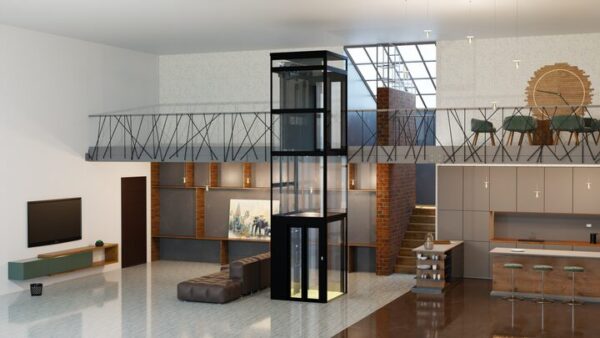
Investing in a residential lift can significantly enhance your home’s functionality and accessibility, especially in multi-level properties. Home lifts provide a convenient way to navigate between floors, making life easier for everyone, particularly those with mobility challenges. However, understanding the financial implications of installing a lift is essential for homeowners considering this upgrade.
When pondering how much does a lift cost for a house, it’s important to recognise that the costs can vary widely based on several factors, including the type of lift, installation requirements, and additional features. Generally, homeowners can expect to pay anywhere from $18,000 to $100,000, depending on their specific needs. For a detailed breakdown of costs, including the various types of lifts available, you can refer to [this resource]. This blog post aims to provide a comprehensive overview of the costs associated with residential lifts, helping you make an informed decision.
Understanding the Basics of Lift Costs
The cost of a residential lift is influenced by various factors, such as the type of lift system, the number of floors it needs to service, and any special features you might want. Generally, there are several types of residential lifts available, including hydraulic lifts, pneumatic vacuum lifts, and more traditional cable-driven systems. Each type has its own cost implications.
For instance, hydraulic lifts tend to be more expensive due to their robust construction and ability to handle higher weights, making them ideal for homes with high traffic. On the other hand, pneumatic lifts may have a lower initial cost but can be more limited in capacity and speed. When planning for a lift, consider not just the purchase price but also installation costs, which can vary based on the existing structure of your home.
Types of Residential Lifts and Their Costs
Hydraulic Lifts
Hydraulic lifts are popular for residential use due to their smooth operation and high weight capacity. The installation of a hydraulic lift typically costs between $20,000 and $50,000, depending on the complexity of the installation and the lift’s specifications. These lifts require a machine room, which can add to the overall cost if your home does not already have the necessary space.
Pneumatic Vacuum Lifts
Pneumatic lifts, which use air pressure to move the cabin, are often more compact and can be installed with less structural modification. Their costs usually range from $25,000 to $50,000. While they offer a modern aesthetic and are easy to install, they may have limitations in terms of weight capacity and travel distance.
Cable-Driven Lifts
Cable-driven lifts are another option, often used in larger homes. These can be more expensive, with costs typically starting around $30,000 and going up to $70,000 or more, depending on the model and features. They provide a robust solution for homes with multiple stories and heavy usage.
Installation Costs and Considerations
When calculating the total cost of a residential lift, installation should be a major consideration. The installation process can vary significantly based on the type of lift and the existing structure of your home. If retrofitting a lift into an existing home, costs can increase due to necessary modifications, such as adding a shaft or making structural changes to accommodate the lift.
For new builds, the cost might be lower as lifts can be integrated into the initial design, minimizing the need for additional alterations. On average, installation costs can add between $5,000 and $15,000 to the overall price, depending on the lift type and installation complexity.
Additional Features and Their Costs
Homeowners often choose to add various features to enhance their lift experience, which can also affect the overall cost. Features such as custom finishes, automatic doors, and advanced safety systems can add thousands to the final price.
For instance, a luxurious finish or bespoke design can increase costs by $10,000 or more. Additionally, smart home integration options, such as remote controls or smartphone apps, might also add to the price but can enhance the convenience and functionality of the lift.
Average Costs for Different Scenarios
To give you a clearer picture, here’s a breakdown of average costs based on different scenarios:
- Single-User Lift: For a basic lift designed for one person, you can expect to pay around $18,000 to $25,000.
- Two-Person Lift: A lift accommodating two people typically costs between $25,000 and $30,000.
- Family Lift: If you need a lift that can hold three or more people, be prepared to spend around $30,000 to $50,000 or more, depending on the features and specifications.
FAQs About Residential Lift Costs
1. What is the average cost of a residential lift?
The average cost for a residential lift in Australia typically ranges from $30,000 to $50,000, depending on the type and specifications.
2. What factors influence the cost of a residential lift?
Key factors include the type of lift system, installation requirements, travel distance, and additional features or customizations.
3. Are there ongoing maintenance costs for residential lifts?
Yes, regular maintenance is essential to ensure safety and functionality, and costs can vary based on the lift type and usage.
4. Can I retrofit a lift into an existing home?
Yes, many lifts can be retrofitted into existing homes, though this may involve additional costs for structural modifications.
5. How long does it take to install a residential lift?
Installation time can vary but generally takes between two to four weeks, depending on the type of lift and the complexity of the installation.
Conclusion
Investing in a residential lift can greatly enhance your home’s accessibility and value, but understanding the costs involved is crucial. Whether you opt for a hydraulic, pneumatic, or cable-driven lift, each type comes with its own price range and considerations. By taking into account installation costs, potential modifications, and desired features, you can better prepare for this investment.
Ultimately, a residential lift offers convenience and comfort, making it a worthwhile addition for many homeowners. If you’re considering a lift, make sure to gather all necessary information and consult with professionals to find the best solution for your needs.